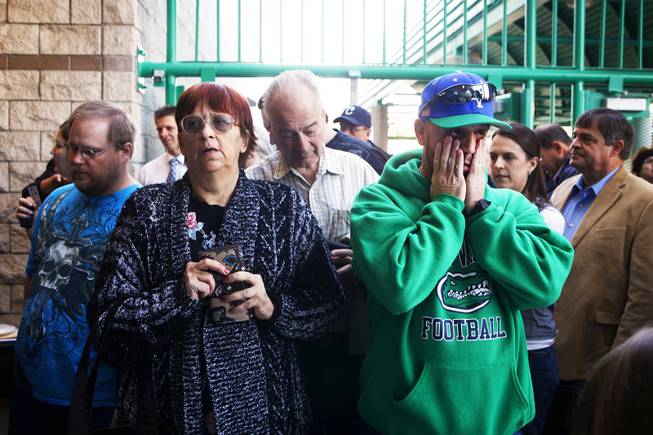
Voters express frustration at disorganization while signing in for the Republican presidential caucus at Green Valley High School in Henderson on Saturday, Feb. 4, 2012.
Wednesday, Feb. 8, 2012 | 2 a.m.
Related story
Sun coverage
Early last fall, when Florida Republicans defied the national party and moved their presidential primary to January, Nevada Republican Chairwoman Amy Tarkanian issued a defiant statement.
“No matter what, we will not allow this disruption to interfere with our goal of creating a presidential caucus that will be the pride of the Western states,” Tarkanian said. “This situation gives Nevadans the opportunity to showcase our ability to adapt and establish our state as a major player in national politics.”
Unfortunately, the verdict on Saturday’s caucuses is quite the opposite.
Instead of the pride of the West, one national commentator described it as a “national embarrassment.” And Nevada’s role as a “major player in national politics” has been thrown into question.
If you look simply at the fact that Republicans conducted a caucus that attracted nearly 33,000 voters, tallied that vote accurately and obtained a credible result, then you could say the presidential caucuses on Saturday were a success.
But by any other metric — turnout, organization, uniformity, timely reporting of the results — the Republican caucuses were a failure.
How that happened is easily tracked.
At nearly every turn, Nevada Republicans seemed to make decisions that either squandered opportunities or ensured defeats. Here’s a look at five of them.
-
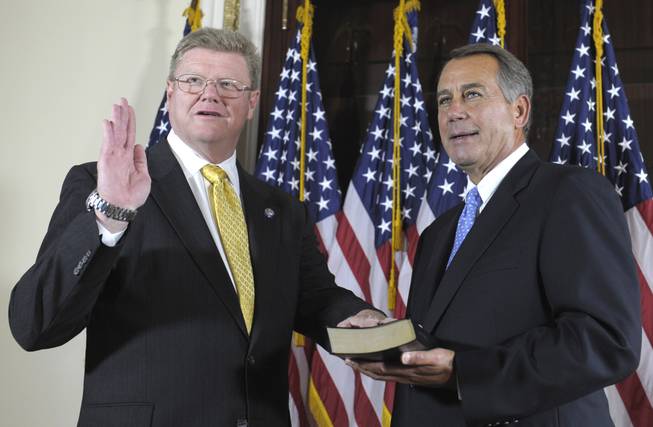
1. Mark Amodei decided to run for Congress
It would be hard for any organization to pull off an event as a big as a statewide presidential primary election without an established and credible leader at the top.
Unfortunately for the Nevada Republican Party, its chairman decided to resign nine months before the caucus.
Planning had begun for the event, and fundraising, which had always been sluggish, had stagnated. But Amodei, who had been chairman for just one year, jumped at the opportunity to run in a special election for U.S. Sen. Dean Heller’s congressional seat.
To make matters worse for the party, its executive director also decided to leave at roughly the same time as Amodei, leaving the top administrative post at the party open.
The party rebounded and hired a strong and well-liked executive director, David Gallagher, and elected Amy Tarkanian as chair. She had just begun raising the credibility of the party and establishing confidence among donors when her husband, Danny Tarkanian, decided to run for Congress. She resigned to assuage concerns from some on the executive board that she wouldn’t be able to remain neutral in her husband’s primary.
Thus, the party was again without a leader.
-
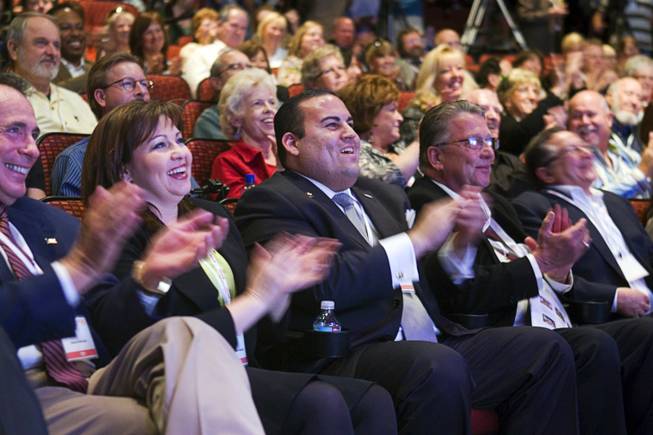
2. Western Republican Leadership Conference a flop
The Western Republican Leadership Conference in October did one thing right: It made Nevada the center of the political universe for a couple of days by hosting a presidential debate.
But other than attracting the candidates for one of their few rounds of campaigning in the Silver State, the conference was a bust.
With the credibility of the state party in question — a problem that can wipe out donor confidence — the larger organization was seen as a means of raising money to put on the caucuses.
In the end, however, the conference generated just barely enough money to cover its costs.
And that left the party still without a bankroll.
-

3. Same-day registration paranoia won the day
Here are two numbers you will continue to hear as we head toward Election Day: 4,465 and 37,562.
The first is how many new voters Republicans registered in the weeks before the caucus this year. The second is how many new voters Democrats registered before the caucus in 2008.
Tarkanian and other Republican leaders wanted to mimic Democrats’ success at growing their ranks by allowing voters to register the day of the caucus.
But paranoia among rank and file Republicans on the central committee won the day. Many believed the same-day registration option would leave the caucuses open to Democrats or others with nefarious intentions to come in and skew the results.
The idea was nixed once in September and again in October.
“We’re thinking of just registering as many people as we can in the weeks ahead of the caucuses instead,” GOP national committeewoman Heidi Smith told the Las Vegas Review-Journal at the time.
That didn’t work out so well.
-
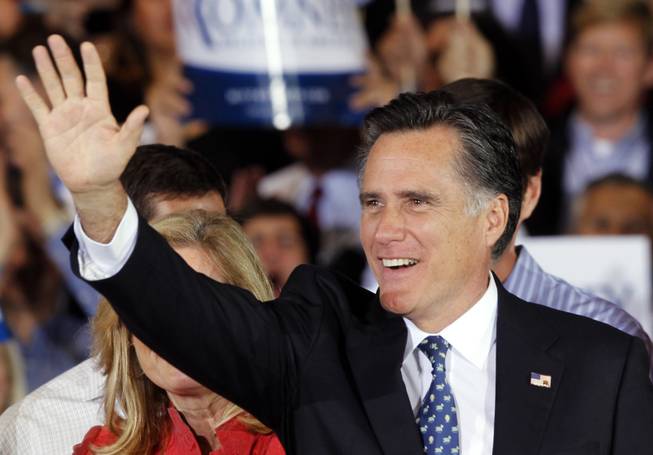
4. Who wants to go third, anyway?
Hoping to diversify the pool of voters involved in selecting the presidential nominee, national Republican and Democratic party leaders decided in 2008 to broaden the early calendar from two states to four.
They formalized a set of rules that would penalize states that jumped ahead, thus threatening the early status of Iowa, New Hampshire, Nevada and South Carolina.
In 2008, Nevada Democrats fought other states’ efforts to move their caucuses and primary elections ahead of the pack. Democrats held that position for 2012. But Nevada Republicans, hoping to keep peace with national Republicans, acquiesced to delaying its caucuses after Florida took a January date.
Instead of being the tiebreaker or the momentum-halter in the No. 3 spot, Nevada ended up in the No. 5 position.
The date change didn’t just cost Nevada’s early caucus position, it confused voters.
“I forgot it was today!” said Henderson Republican Elizabeth Webster who showed up Saturday with the young nephew she was baby-sitting. “And everything I saw online said it was Jan. 14.”
-
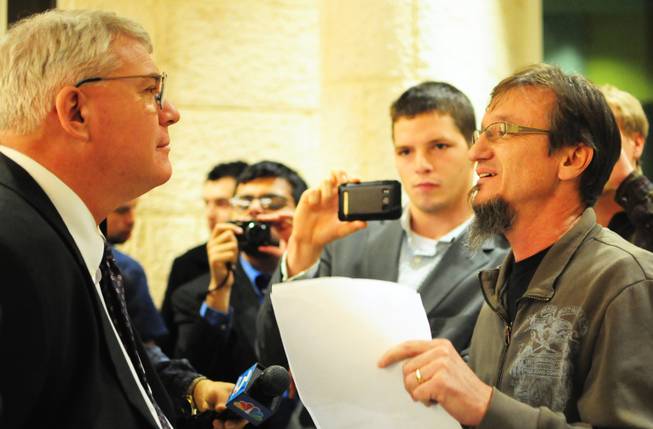
5. Go ahead, do it your way
Much to the confusion of voters, the state party did not establish a common set of rules for conducting the caucuses.
Instead, it let county parties establish everything from start times to rules on whether candidates could give speeches at caucus sites.
The result was a mishmash of caucus procedures that differed in all 17 counties.
The decision to decentralize the planning — which was made in October, just four months before the event — was made when county officials became fed up with the apparent inability of the state party to get its act together.
“The state party was just slow getting a plan put together,” Washoe County
Republican Chairman Dave Buell said. “It was probably in October, I finally had had enough. Nothing was getting done. We were not getting to where we needed to be.
“Here in Washoe we’ve really gotten our stuff going together and we weren’t going to let a bad caucus ruin that,” Buell said.
The decision also gave state party officials an easy excuse. When things went wrong — the count dragged on for more than a day or a last-minute evening caucus was scheduled — they could simply say: It’s up to the county.






Join the Discussion:
Check this out for a full explanation of our conversion to the LiveFyre commenting system and instructions on how to sign up for an account.
Full comments policy